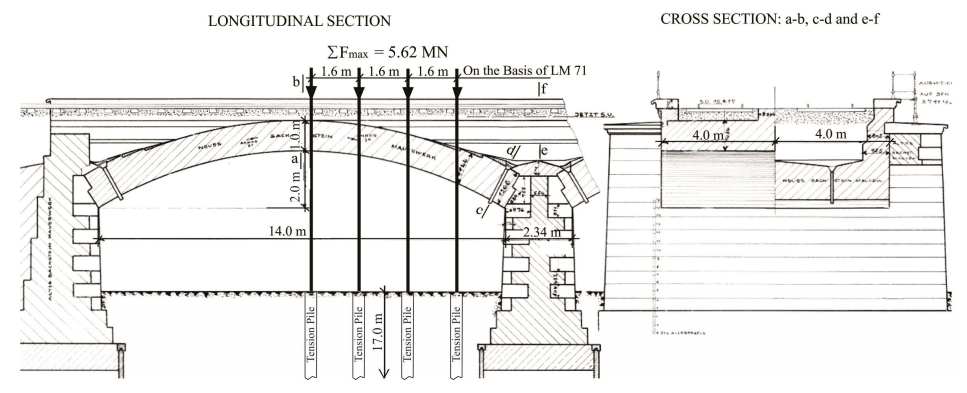Bartolomei, Viktor1; Wigger, Heinrich2 and Schulz, Jens-Uwe3
1 Research Associate and Ph.D. Candidate, Jade University of Applied Sciences, Ofener Straße 16/19, 26121 Oldenburg, Germany, viktor.bartolomei@jade-hs.de
2 Professor and Head of Institute of Material Science, Jade University of Applied Sciences, Ofener Straße 16/19, 26121 Oldenburg, Germany, heinrich.wigger@jade-hs.de
3 Professor, Ostwestfalen-Lippe University of Applied Sciences, Emilienstraße 45, 32756 Detmold, Germany, jens-uwe.schulz@hs-owl.de
ABSTRACT
The evaluation of the load-bearing capacity of historic bridges and the size of the impact due to live loads form the basis to assess the structural integrity of the building. The arch masonry bridge
construction is commonly used throughout Europe and Asia. During the 19th century only this vaulted construction technique was used in Germany, so a large number still exist and are used today. They account for roughly 33% of all bridges in Germany. Due to the high durability of arch masonry bridges, the maintenance costs are not so high. Railway arch masonry bridges are about 20% of the total maintenance budget of the railway companies. The reconditioning and strengthening of historical arch masonry bridges is complex and is not routine engineering tasks. This process requires individual solutions since not every bridge is the same. The increasing live loads and material fatigue are factors that complicate the situation even more. Fast replacement of the existing bridges in not practicable. That is why they need to be preserved. Therefore an accurate assessment of the state of integrity is essential. As part of the research project experimental studies on a section of a 380m long arch bridge were carried out. The bridge was built in 1867 and consisted of 15 vaults. Overall, two separate load tests were carried out successfully by using the load model 71. In the first load test the bridge was loaded up to 5.6 MN in its original condition. For the second load test the spandrel of the bridge was removed and the cover of the multi-leaf pier was cut away. By exposing the three-leaf pier the load-bearing and composite behaviour could be monitored. The tested results were modelled in an FE-simulation software to gain a better understanding of the balance of construction.
092



